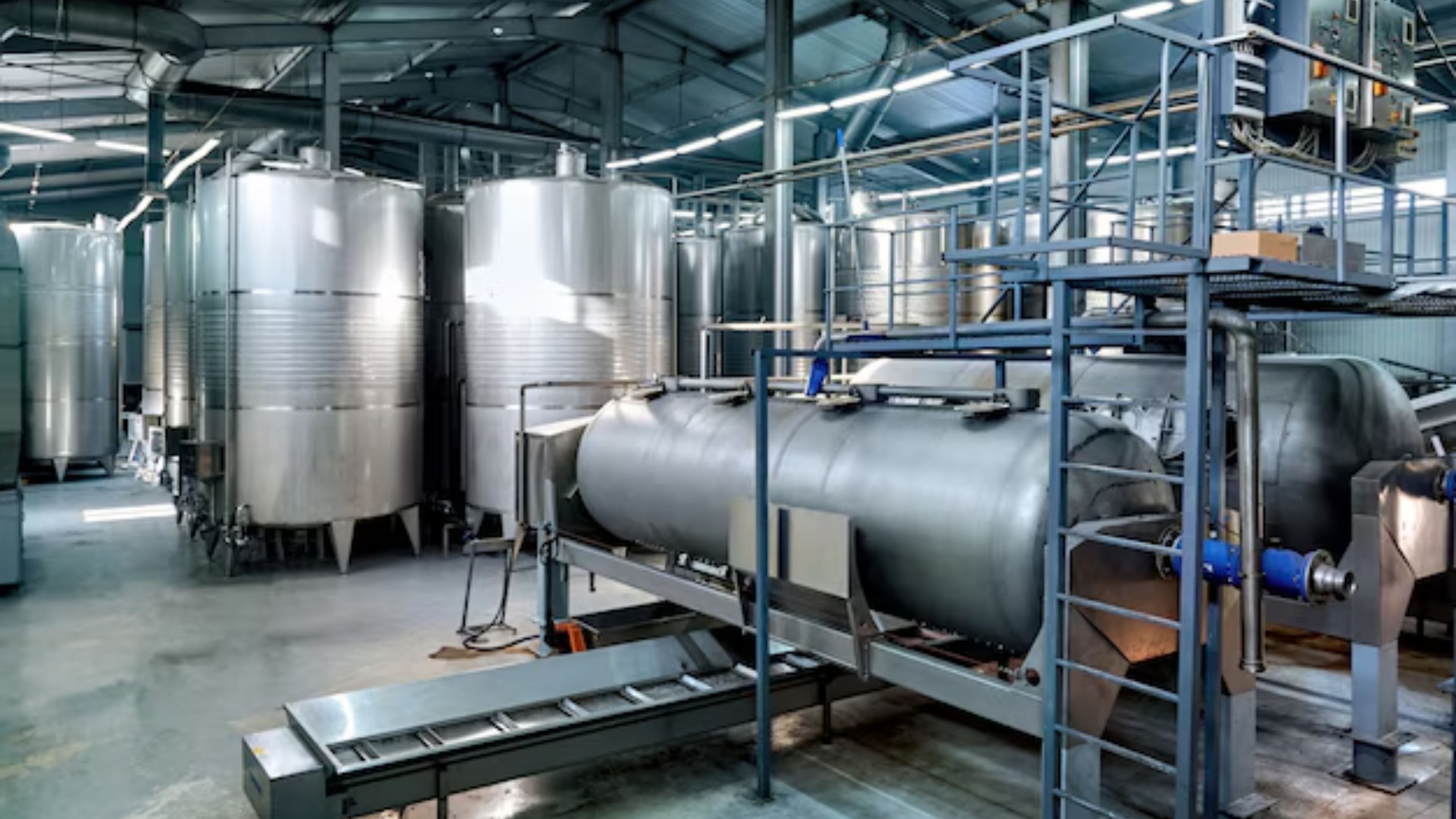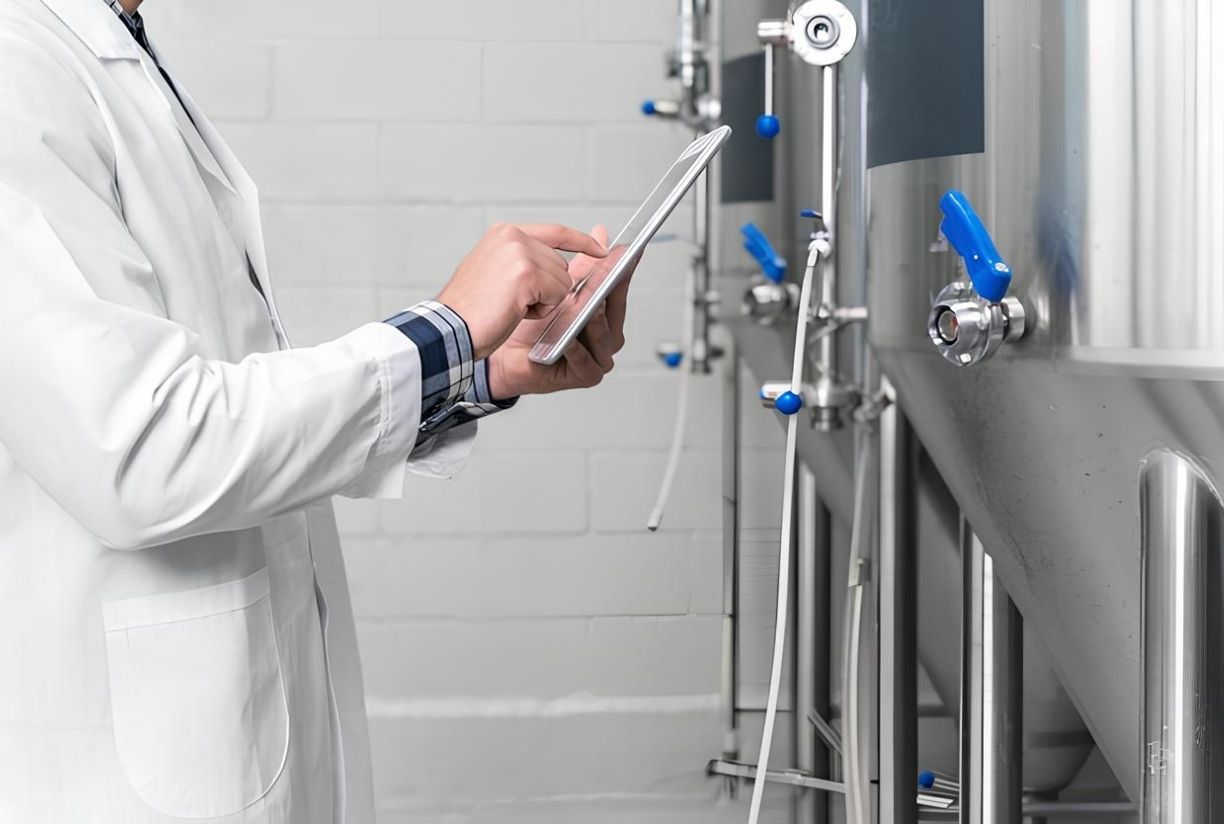How Can You Increase Hygiene Standards with CIP and SIP Systems?
- Blog
- How Can You Increase Hygiene Standards with CIP and SIP Systems?
How Can You Increase Hygiene Standards with CIP and SIP Systems?
CIP (Clean in Place) and SIP (Sterilize in Place) systems are among the most effective ways to enhance hygiene standards in the food and pharmaceutical sectors. These systems automate cleaning and sterilization processes, minimizing human intervention and eliminating errors. This significantly improves hygiene levels. By 2025, these systems are expected to be further refined, making processes more reliable and efficient.
Advanced CIP and SIP systems ensure that products and production areas are maintained under hygienic conditions. This is particularly crucial in sectors like food safety and pharmaceutical manufacturing, ensuring that every stage of the production process adheres to high hygiene standards. At Ss Proje, we provide our clients with state-of-the-art CIP and SIP systems, helping them elevate their hygiene standards.
How Do CIP and SIP Systems Continuously Monitor Your Hygiene?
Another key advantage of CIP and SIP systems is their ability to continuously monitor cleaning and sterilization processes. By 2025, these systems will feature more advanced monitoring technologies, with every step of the cleaning process recorded digitally. This ensures transparency in cleaning and sterilization operations and makes audit processes easier to track.
These monitoring systems ensure that hygiene is maintained not just initially but at all times. Any disruptions or errors in the system can be detected instantly, allowing for immediate intervention. This is especially critical in the food and pharmaceutical industries, where hygiene must always meet high standards. At Ss Proje, we use these monitoring and control systems to help facilities consistently maintain high hygiene levels.
Reducing Environmental Impact with CIP and SIP Systems
The efficient operation of CIP and SIP systems not only enhances hygiene levels but also significantly reduces environmental impact. These systems minimize water and energy consumption during cleaning and sterilization, offering environmentally friendly solutions. By 2025, environmental sustainability is expected to gain even greater prominence, with CIP and SIP systems playing a key role in achieving this goal.
CIP and SIP systems don’t just perform efficient cleaning; they also help reduce waste. By optimizing water and chemical usage, they ensure more efficient use of resources. Ss Proje provides environmentally friendly and sustainable CIP and SIP solutions, contributing to facilities’ efficiency in both hygiene and environmental terms.
How Can You Reduce Human Error with CIP and SIP Systems?
Manual cleaning and sterilization processes are always susceptible to human error. Such mistakes can jeopardize hygiene standards and even lead to product contamination. CIP and SIP systems, by providing automated cleaning and sterilization, minimize human errors. By 2025, as these systems become more sophisticated, operational errors could be completely eliminated.
These automated systems use the right chemicals and water at the right time, ensuring every stage of the cleaning process is performed accurately. Monitoring and controlling the systems is much easier, making the detection of faulty operations quicker. At Ss Proje, we enhance facility efficiency with these error-free solutions, guaranteeing hygiene standards.

How Can You Shorten Process Times with CIP and SIP Systems?
The automated nature of CIP and SIP systems significantly shortens the duration of cleaning and sterilization processes. By 2025, as these systems become faster and more effective, the time spent on production processes will decrease further. This allows businesses to increase production output and use resources more efficiently.
This increase in speed improves not only production efficiency but also hygiene standards. Achieving high hygiene in a short time is especially critical in the food and pharmaceutical sectors for enhancing quality. Ss Proje, with solutions that boost the speed and efficiency of CIP and SIP systems, helps facilities accelerate their processes while maintaining hygiene.
Application Areas and Benefits of CIP and SIP Systems
The benefits of CIP and SIP systems are not limited to the food and pharmaceutical sectors. These systems are also widely used in biotechnology, cosmetics, and chemical industries. By 2025, the application areas of CIP and SIP systems are expected to expand further, enabling their adaptation to various industries.
One of the greatest benefits of CIP and SIP systems is their ability to ensure uninterrupted hygiene in production processes. These systems help eliminate human-induced errors, reduce environmental impact, and shorten production times. Ss Proje provides customized CIP and SIP solutions tailored to the needs of different sectors, delivering maximum hygiene and efficiency benefits to all types of facilities.
How Can You Increase Production Efficiency with CIP and SIP Systems?
CIP and SIP systems do more than just elevate hygiene levels; they also enhance production efficiency. Thanks to automated cleaning and sterilization processes, the need for labor decreases, and downtime is minimized. By 2025, with further optimization of these systems, unexpected production stoppages will decrease, boosting facilities’ production capacity.
Efficiency lies not only in the speed of machines but also in the proper management of every stage. CIP and SIP systems perform cleaning operations in the most effective way without disrupting production processes. At Ss Proje, we offer advanced CIP and SIP solutions to help businesses increase efficiency and reduce operational costs.
How Can You Reduce Maintenance Costs with CIP and SIP Systems?
Another significant advantage of CIP and SIP systems is the reduction of maintenance costs. These systems are typically equipped with durable, long-lasting components, eliminating the need for frequent maintenance. Their automated nature allows early detection of malfunctions, preventing major repairs. By 2025, as these systems advance, maintenance costs are expected to decrease even further.
Low maintenance requirements significantly reduce businesses’ costs. Automated cleaning and sterilization processes enable quick detection of maintenance needs, preventing production interruptions. Ss Proje minimizes your maintenance expenses with CIP and SIP systems, providing facilities with long-term efficiency.
How Can You Ensure Food Safety with CIP and SIP Systems?
In the food sector, hygiene affects not only quality but also food safety. CIP and SIP systems play a key role in enhancing safety at every stage of food production processes. By automating cleaning and sterilization, the risk of microbiological contamination in products is minimized. By 2025, as CIP and SIP systems become more sophisticated, food safety standards will reach an even higher level.
These systems provide significant benefits, particularly in high-risk production areas. CIP and SIP solutions effectively eliminate chemical residues and microorganisms, guaranteeing product safety. At Ss Proje, we offer innovative and high-standard CIP and SIP solutions to keep food safety at the highest level.
How Can You Improve Quality in Pharmaceutical Production with CIP and SIP Systems?
In the pharmaceutical sector, quality control and high hygiene standards directly impact product efficacy and safety. CIP and SIP systems are of critical importance in pharmaceutical production processes. These systems ensure continuous hygiene and proper sterilization across production lines. By 2025, as these systems become smarter, quality control in pharmaceutical production will become even more reliable.
Ensuring hygiene at every step of pharmaceutical production is vital for maintaining product quality. CIP and SIP systems provide minimal margin for error during sterilization and cleaning operations. At Ss Proje, we offer safe and high-quality production processes to the pharmaceutical industry with CIP and SIP solutions, enhancing quality.
What Is the Future Role of CIP and SIP Systems?
By 2025, the future of CIP and SIP systems will be shaped by more integrated and intelligent solutions. Thanks to new technologies, these systems will not only provide cleaning and sterilization but also enable more efficient process management through integrated data analytics. This transformation will make all operations in facilities more flexible and faster.
The future of these systems is being shaped by digitalization and automation. CIP and SIP systems monitor every moment of production lines through machines and sensors, offering a more efficient and sustainable production process. Ss Proje keeps pace with these developments, continuing to provide clients with cutting-edge CIP and SIP solutions.
Can You Gain a Competitive Advantage with CIP and SIP Systems?
As competition in the food and pharmaceutical sectors intensifies, enhancing facility efficiency and maintaining hygiene standards have become more critical than ever. CIP and SIP systems provide facilities with a significant competitive advantage. The automated cleaning and sterilization solutions they offer reduce costs while keeping hygiene levels consistently high. By 2025, as these systems become more effective, this competitive edge will become even more pronounced.
CIP and SIP systems enhance not only hygiene but also production speed and quality. These systems enable facilities to produce more quickly and efficiently. At Ss Proje, we offer the most advanced CIP and SIP solutions to help you seize this competitive advantage, ensuring you maintain leadership in your industry.


